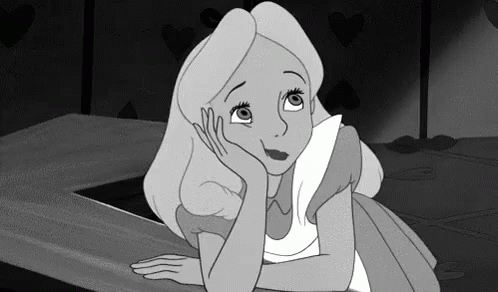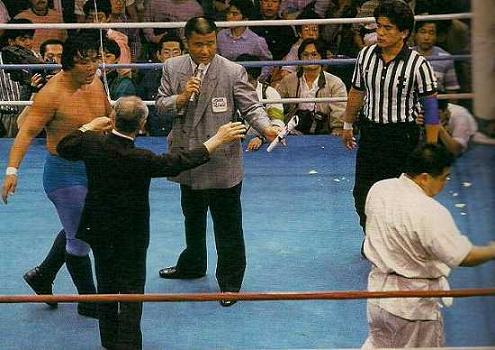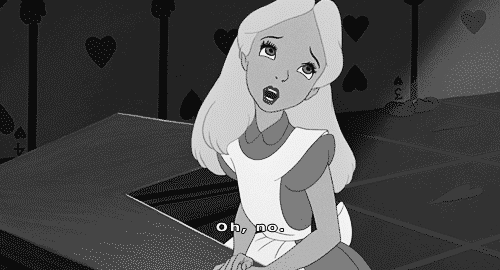Mettiamo i puntini sulle i. Così per far star zitta la cricchetta.
Siamo nel 1973, Atsushi Onita ha solo 16 anni, il padre muore e il nostro giovane eroe decide di dover contribuire in qualche modo alla sua famiglia e, dato che la sua passione e interesse risiere nel picchiarsi, quale strada più adatta se non quella di unirsi al Dojo della All Japan?
Il debutto arriverà l'anno seguente, nel 1974 al Tokyo Korakuen Hall, contro Masa Saito.
Atsushi Onita would start his incredible journey that would eventually change Pro-Wrestling would begin in 1973. Onita's father had passed away resulting in Onita feeling like he needed to support his family despite his young age resulting in him dropping out of high school and joining the All Japan Dojo in 1973 before making his in ring debut on April 14, 1974 at Korakuen Hall at the age of 16 as he would lose to Akio Sato in his debut match.
Unica roba rubata, la storia del padre. Wikipedia non la mette. Il resto sono date e nomi.
Presenti ovunque: Wikipedia, Cagematch, Wrestlingdata.
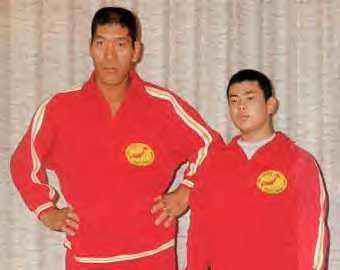
Foto effettivamente presa dall'articolo. Ma non vedo il reato.
Il suo enorme carisma e talento come peso leggero, lo mettono subito al centro dell'attenzione, tanto da guadagnare l'onore di essere uno dei secondi di Giant Baba.
Ci spostiamo nel 1981, Onita in tour con Masa Fuchi nella Repubblica Domenicana, si trova a non essere d'accordo sul dover subire il pin per due volte in un 2/3 Falls. Per la rabbia inizia a stiffare contro il suo avversario.
Il promoter lo chiude in uno spogliatoio, in modo che Fuchi non potesse aiutarlo, e viene malmenato finoa perdere i sensi.
Non in grado di combattere e costretto a riprendersi viene ospitato da un amico, Terry Funk, nel suo ranch ad Amarillo, Texas.
Questa situazione, si trasforma in un'opportunità enorme. Grazie ai Funk iniziano a essere bookati a San Antonio, a Memphis e pure in Puerto Rico. Questi elementi, permetteranno a Onita di studiare stili differenti e di provare sia ad apprendere le modalità di booking americano che, lo stile hardcore. A Puerto Rico avrà occasione anche di sperimentare con mano l'uso del filo spinato e del fuoco.
Onita's charisma would help him out early in wrestling, as it would get him a spot as Giant Baba's assistant early on in his career. Onita would start out his career as a very good Junior Heavyweight wrestler show casing his high flying moves off the top rope. Onita would leave Japan in 1981 with Masa Fuchi and begin touring all around to gain experience in many different styles. They would find themselves in the Dominican Republic where Onita would be asked by the promoter to lose to him two times in a two out of three falls tag match which not only Onita would refuse but he would also end up stiffing the opponent during the match. This would result in the promoter getting Onita alone locked in a room backstage away from Fuchi to help save him as Onita would get beaten senseless and barely be able to move. Onita would need to take time off and get out of the Dominion Republic. He would reach out to an old friend in Terry Funk as Onita and Fuchi would move to the Double Cross Ranch in Amarillo, Texas and live with Funk's family until Onita would heal up. Funk would help get Onita and Fuchi get booked in Amarillo and San Antonio, Texas before getting them a spot in Memphis, Tennessee. Funk would end up purchasing an old Chrysler that was on its last legs for them and they were off to begin working for Jerry Jarrett's CWA promotion. Onita would learn the style of American booking, and hardcore wrestling in Memphis almost right away as he and Fuchi would take part of in a match against Eddie Gilbert and Ricky Morton which consisted of a brawl that would end up in the concession stands. He would also see barbed wire matches that would lead to extremely bloody fights in Puerto Rico. Video of Atsushi Onita & Masa Fuchi vs. Eddie Gilbert & Ricky Morton 1981
Sul fatto che fosse secondo di Baba, è storia, quindi la sapevo a memoria. Dobbiamo citare le fonti anche della storia?
Qui preso la storia del pestaggio, non me la ricordavo, e nessun altro posto la mette.
Tutto il resto è anche qui storia, inoltre avevo già parlato ampiamente di tutto questo nel topic su Puerto Rico, citando il percorso dell'hardcore e il ruolo di Onita con la sua FMW.

Foto presa dal sito, verissimo.
Nel 1982 il debutto di Tiger Mask costringe la AJPW a correre ai ripari, andando a modificare drasticamente le modalità con cui i propri Junior venivano utilizzati. A occupare questo spazio, viene scelto proprio Onita, il volto della divisione viene richiamato in Giappone e inizia a usare uno stile più atletico e veloce (gli Junior classici prima di Tiger Mask erano molto meno svolazzanti, ma potrebbe essere il tema per un'altro topic/progetto abbandonato).
In 1982, All Japan's rival New Japan Pro Wrestling would become a huge success with Junior Heavyweight wrestler Tiger Mask, who was putting on an incredible matches with Dynamite Kid and The Cobra. All Japan would try to counter New Japan's success with their own Junior Heavyweight division, and would select Atsushi Onita to fill that role. Onita would return back to Japan and defeat Chavo Guerrero for the NWA International Junior Heavyweight Title. The All Japan Junior Heavyweight division could never match anywhere close to New Japan's, but Onita's style would begin causing his knees to deteriorate and begin breaking down.
Qui che il debutto di Tiger Mask abbia portato la AJPW a cercare di reinventare i pesi leggeri, è storia. Tanto che tutto quello che dico io, non viene manco citato qui, ma si tratta di una sintesid i un concetto ben più ampio
Questo stile inizia a indebolire le ginocchia di Onita.
Il 20 aprile 1983, un po' la sfortuna e un po' questi sforzi, portano Onita a scivolare su dell'acqua fuori ring e rompersi i legamenti del ginocchio. Deve operarsi.
Il 2 dicembre 1984 ultimo match sul ring della All Japan contro Mighty Inoue, era tornato da qualche mese ma, sia lui che Baba decidono che per lui sia infattibile continuare a stare su un ring. Il 3 gennaio 1985 si tiene una cerimonia di ritiro, e Baba, considerandolo come un figlio, gli dona dei soldi come fondo di pensionamento per permettergli di trovarsi un lavoro fuori dal puroresu (all'epoca c'erano solo NJPW e AJPW, la UWF prima versione era praticamente un salto nel buio e non era ancora del tutto shoot style come la seconda).
The most devastating injury of Onita's career would happen on April 20, 1983, as Onita would end up accidentally slipping while leaving the ring following a match with Hector Guerrero after some water had spilt on the mat outside the ring which would result in Onita tearing ligaments and blowing out his cartilage and shattering his kneecap. Onita would need knee surgery and at the time felt like his career was over. Onita would rehabilitate and come back on December 2, 1984 against Mighty Inoue but he would not be able to do any of the moves he was known for as a Junior Heavyweight and Giant Baba would feel he was not fit to continue to be a professional wrestler. It was just All Japan and New Japan at the time, so Onita would be forced to retire from professional wrestling on January 3, 1985 at Korakuen Hall. Giant Baba who thought of Onita as a son would give Onita a retirement fund to help support Onita as he would look to make a career outside of professional wrestling.
Qui che sia scivolato e si sia ammazzato, che sia tornato nel 1984 e dopo il match con Inoue si sia ritirato, è storia.
Possiamo considerare la questione dei soldi, ma è detta abbastanza di frequente in giro
Se questa storia fosse a lieto fine, non saremmo qui.
Onita prova a investire in giro. Ogni suo investimento è un fallimento. Perde soldi, inizia a fare lavoretti in giro, sia come operaio che con la Yakuza. Questo percorso lo porterà anche in prigione.
Uscito di prigione, si accorge che per lui non esiste altro mondo se non quello del Puroresu.
Nel 1988 riesce a farsi assuemere come allenatore e amministratore per la JWP, federazione femminile, questo porterà in lui un desiderio, poter tornare su un ring.
Il 1988 non è un anno di poco conto nella storia. La UWF chiuse nel 1986 per riaprire, totalmente fake shoot, proprio nel 1988 e, nello stesso anno, Ryuma Go, lasciata la AJPW, aprirà la prima federazione indipendente in terra nipponica, la Pioneer Senshi.
Il 3 dicembre 1988 (una data non a caso), onita ritorna sul ring perdendo contro Gran Hamada.
Onita would use the retirement money to make investments which would eventually see him lose a majority of his money. Onita would have to begin working several jobs including construction but he would end up falling on the job and his knees would not allow him to continue. Onita would end up going in to debt during this time period and would find himself in jail for a period of time. After getting out of jail, he would be desperate for a job and felt like he needed to get back into professional wrestling somehow. Onita would end getting a job as a trainer and an office job for the JWP women's promotion. Being back in the wrestling world would just create a hole in Onita as it would make him want to begin wrestling again. A new small independent promotion had opened up in 1988 called Pioneer Senshei which had been started up by fellow former All Japan wrestler Ryuma Go as Onita would make his professional wrestling return after 4 years on December 3, 1988 losing to Gran Hamada.
Anche qui è storia, viene citato ovunque
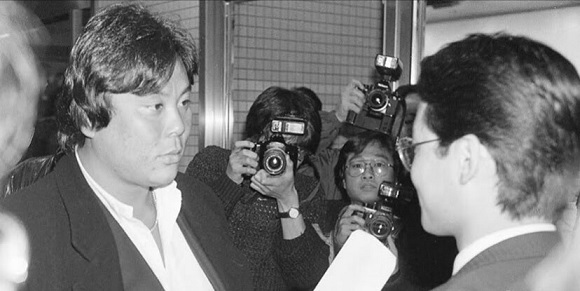
Foto presa dal sito
Qui, tutti questi elementi iniziano a combaciare.
Onita vuole attirare l'attenzione su di sè, quindi utilizza delle tattiche che ha appreso oltre il Pacifico (tono molto da Istituto Luce). Vuole farsi bookare dalla UWF, perchè vuole dimostrare di avere abilità da shoot stylist.
Si presenta nel 1989 a un evento della federazione a Tokyo, con dietro la stampa, proprio per lanciare una sfida aperta alla UWF.
Il presidente della UWF lo ferma e gli intima di andarsene anche perchè è senza un biglietto.
Onita coglie la palla al balzo per dichiarare ai giornalisti come, la UWF, abbia paura della abilita di un vero pro wrestler come lui.
During this time, an explosion in popularity would begin for a promotion called UWF. UWF would be an alternative to the style that New Japan and All Japan had promoted for many years. UWF would focus their matches in a shoot style environment, making their matches look as believable as possible. Onita would see the popularity that UWF, and would go to a UWF show in 1989, and issue a letter of challenge to UWF. UWF President Jin would refuse to allow Onita into the show, after not having a ticket to attend, and Onita was force to leave. Onita would take this to the media and Onita would be seen as the winner as the "real" UWF would refuse to accept Atsushi Onita's challenge as if they were scared of an actual professional wrestler challenging them.
Citare l'esistna della UWF, parlando della storyline, penso sia storia. Il resto tutta roba extra.
All'epoca a Tokyo, esisteva un'altra realtà abbastanza in crescita, la WKA. World Karate Association. Una federazione di arti marziali che, ogni tanto, ospitava wrestler ai propri eventi, sia per scontri inter-stile, quindi dei proto-MMA, sia con match veri e propri.
Il passo successivo di Onita è proprio qui. Per dimostrare di essere un vero lottatore, lancia la sua sfida all'asso della federazione, un campione di Karata di nome Masashi Aoyagi. Il match ha luogo il 2 luglio 1989, all'interno dell'evento dedicato alla memoria di Ikki Kajiwara. Sotto delle regole che vietavano a Onita di usare mosse da wrestler, in un combattimento su 5 round.
Qui iniziamo la nostra visione della FMW. All'evento abbiamo 3 match di Wrestling:
Kentaro Hoshino Vs. Hirokazu Hata
Osamu Kido vs Norio Honaga
Devil Masami & Harely Saito vs Miss A & Yuki Ito
E ovviamente il nostro ME.
Atsushi Onita would look to show the UWF that he would be able to fight legitimate fighters so he would make a challenge to a top karate fighter in Masashi Aoyagi for a match on July 2, 1989 at Korakuen Hall in the WKA promotion which was a Martial Arts promotion that had mostly Martial Fighters but some wrestlers like Shinya Hashimoto compete on their shows in Martial Arts fighting. Onita would make it to the fourth round with Aoyagi until Onita would end up breaking the rules and attacking Aoyagi and using wrestling moves causing himself to get Disqualified. From what originally was suppose to be a show case of Onita's Martial Arts skills had turned into a Grudge now with Aoyagi.
Nulla preso dal sito in questione
Geno ha scritto: ↑01/10/2021, 3:44Che pettinata
Avete altro da aggiuntere?
Che pettinata Geno, che pettinata sul nulla.
La cricchetta dei turni notturni va'.






